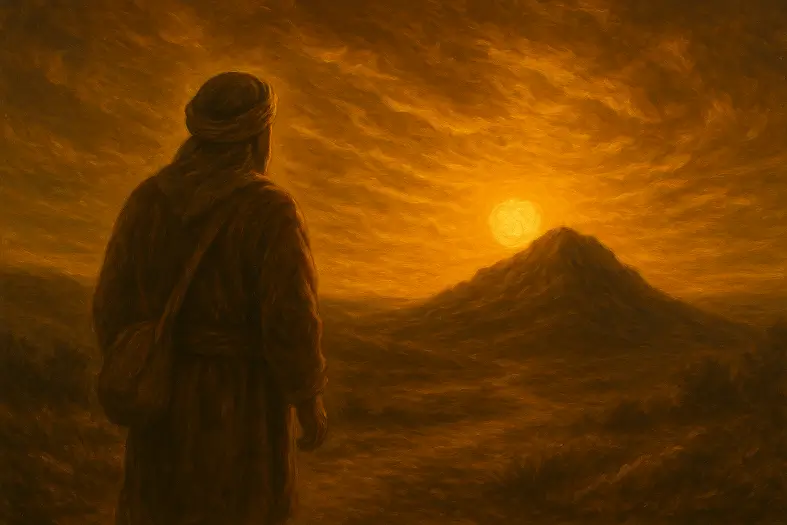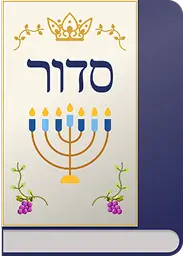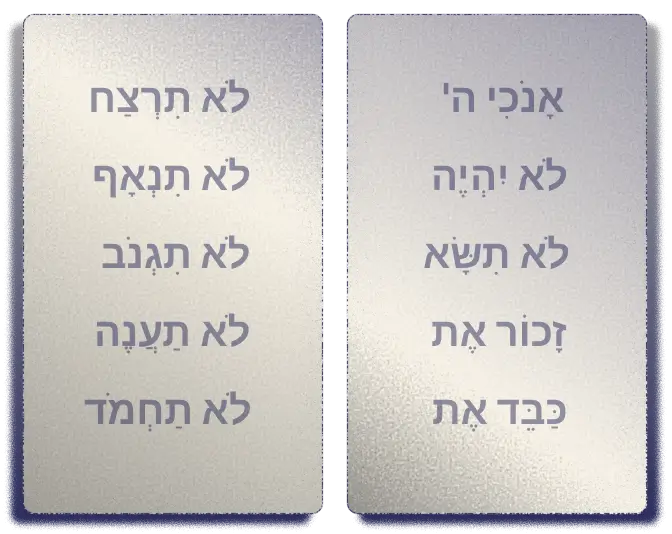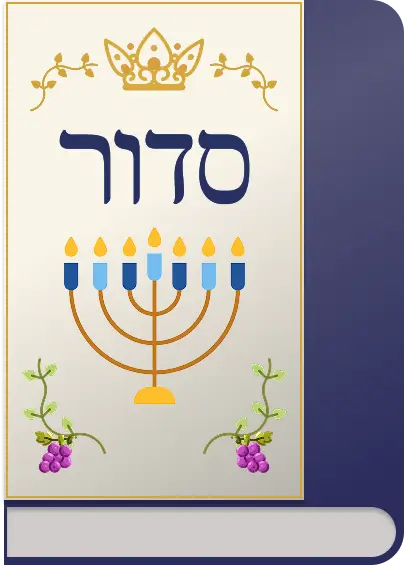

Vayifga BaMakom
Vayeitzei opens with a simple line that hides a whole world of feeling:
“וַיֵּצֵא יַעֲקֹב מִבְּאֵר שָׁבַע וַיֵּלֶךְ חָרָנָה”
“Yaakov left Be’er Sheva and went to Charan.” (28:10)
Rashi notes that the Torah didn’t need to say “he went out.” It could have said only “he went to Charan.” From here Chazal teach: when a tzaddik leaves a place, he takes with him its hod, ziv, hadar—its glory, radiance, and beauty. Be’er Sheva is dimmer because Yaakov is gone.
That’s the emotional backdrop of the scene: a man who has just emptied his parents’ home of its last son, running from a murderous brother, walking alone into exile.
Then something strange happens.
The sun “jumps” down early. Yaakov is forced to stop for the night. He gathers stones around his head for protection, lies down on hard ground, and falls asleep.
He does not yet know that the “random” place where exhaustion finally catches him is Har HaMoriah—the future Makom HaMikdash. Rashi, following Chazal, says this is the very site of the Akedah, the point on earth where heaven and earth will one day meet.
Yaakov thinks he’s just grabbing a night’s sleep on the road.
Hashem has set the stage for the birth of nighttime tefillah.
The Torah describes the moment like this:
“וַיִּפְגַּע בַּמָּקוֹם” – “He encountered the place.” (28:11)
Rashi unpacks two words.
Fascinatingly, the Torah does not say “vayitpallel.” Instead, it uses this softer, accidental-feeling word, vayifga—he bumped into, he collided with, he was struck by.
There’s a message in that:
Sometimes we don’t come to prayer.
Prayer comes to us.
Rashi adds another layer: kefitzat ha’aretz. The land “shrinks”; the holy mountain, so to speak, comes to meet Yaakov. He thought he had passed Har HaMoriah. Hashem folds the map, brings the Mikdash under his feet, and forces the encounter. The sun sets early just so he’ll have to stop here.
Ramban develops the geography. Yaakov’s stone pillow is not just a makeshift mattress; it’s aligned with the very axis of the future Beit HaMikdash—“Beit Elokim” and “Sha’ar HaShamayim,” the house of G-d and the gate of heaven. Prayer and Mikdash are welded together in this first night of exile. This is the place where tefillah goes straight up.
Yaakov wakes and says:
“אָכֵן יֵשׁ ה׳ בַּמָּקוֹם הַזֶּה וְאָנֹכִי לֹא יָדָעְתִּי… מַה נּוֹרָא הַמָּקוֹם הַזֶּה, אֵין זֶה כִּי אִם בֵּית אֱלֹקִים וְזֶה שַׁעַר הַשָּׁמָיִם.”
“Surely Hashem is in this place and I did not know… How awesome is this place! This is none other than the house of G-d, and this is the gate of heaven.” (28:16–17)
Rashi notes: “Had I known, I would not have slept here.” You don’t nap casually on Har HaMoriah. But that’s exactly the point: holiness here is discovered after the fact. The place was holy even when Yaakov didn’t feel it.
That’s a lifelong lesson in how tefillah works in exile. We often realize only later: “Achen yesh Hashem baMakom hazeh va’anochi lo yadati—Hashem was in that dark place, and I didn’t know.”
In the dream itself, Yaakov sees:
A ladder “set on the earth and its head in the heavens,”
malachim going up and down,
and Hashem standing above it.
For Rambam (Moreh II:6, II:10), the “angels” are not winged figures but the incorporeal forces and laws through which Hashem governs the world. They “ascend” to receive command, they “descend” to carry it out. The ladder is the ordered structure of reality itself.
Ralbag pushes this even more philosophically: the ladder is the total chain of being—from matter and life up through the separate intellects—all ultimately dependent on a single First Cause. Prophecy here is a crash course in metaphysics.
What does that have to do with praying in the dark?
Rambam in Moreh III:17–18 says that hashgachah pratit—personal providence—intensifies in proportion to a person’s knowledge of Hashem and moral refinement. In other words:
The more your mind and character line up with the true structure of the world,
the more your life is held and guided within that structure.
Yaakov’s ladder moment is not an escape from reality. It’s a revelation of reality.
Later in the parsha, Lavan relies on nichush and teraphim—superstitious tools to control the future. Yaakov’s response is completely different: he prays, works honestly, and lives as if the world is genuinely in Hashem’s hands.
Prayer, in the Rambam/Ralbag frame, is not magic. It’s the human being aligning with the ladder—turning fear, confusion, and desire into words addressed to the One who actually runs the system.
At night, when things feel chaotic, Ma’ariv is our way of climbing a few rungs into clarity.
Chazal link each of the Avot with a daily tefillah:
Rav Kook sees more than a schedule here. Each prayer expresses a different mode of emunah:
At Beit El, Yaakov lies down with no guarantees. Esav is behind him, Lavan is ahead of him, and he has nothing but a staff in his hand. In that place, Ma’ariv is born.
Rav Kook connects this to Kriyat Shema al haMitah:
Before sleep, a person is asked to say Shema, review the day, forgive, entrust the soul to Hashem. Sleep is a mini-death; the future is hidden. Saying Shema on the pillow is reliving Yaakov’s act: lying down in an uncertain world and praying.
Nighttime faith is different from daytime faith.
Ma’ariv and Shema al haMitah are the daily training in that kind of emunah.
Rabbi Jonathan Sacks zt”l points out that Yaakov’s Beit El moment comes not in a beit midrash or a family tent, but on the road, at a nameless “nowhere” between Be’er Sheva and Charan.
Yaakov is:
And there—specifically there—he discovers that “this place” is a gate of heaven.
Rabbi Sacks reads Vayifga BaMakom as the paradigm of spiritual awakening in the in-between spaces:
He writes that Jewish history begins to learn in Vayeitzei how to find Hashem not only in sanctuaries but in exile, not only in stability but in movement.
Prayer, then, is not reserved for ideal moods and holy settings. The first Ma’ariv is a scared man on cold ground who didn’t even mean to daven there.
The message:
If Yaakov’s rock can become a Mizbe’ach,
your bus stop, dorm room, or office stairwell can become a Beit El.
You don’t have to “feel ready.” Sometimes you say a pasuk, a Tehillim, a half-whispered “Ribono shel Olam, I’m lost,” and only afterwards realize: “Achen yesh Hashem baMakom hazeh.”
Here are the core teachings this moment gives us:
Yaakov was not in a synagogue. He was not preparing for davening. He was not spiritually “ready.”
He simply stopped because the sun went down too fast.
Lesson:
We often imagine that spiritual moments require preparation, quiet, atmosphere, or inspiration.
Vayeitzei teaches the opposite:
The holiest moments of life are sometimes the ones we didn’t plan, didn’t want, and didn’t recognize until later.
Jewish spirituality is not escapist. It happens in the middle of real life — on the road, while exhausted, confused, and scared.
Yaakov says:
“אָכֵן יֵשׁ ה׳ בַּמָּקוֹם הַזֶּה וְאָנֹכִי לֹא יָדָעְתִּי —
Hashem was here, and I didn’t know.”
We almost always discover Divine presence retroactively:
Lesson:
Spiritual awareness is often hindsight.
The work of Emunah is trusting that truth during the darkness.
Vayeitzei is the first Jewish exile.
But look at what happens:
This reframes a huge piece of Jewish history:
Exile is not a break from holiness.
Exile is where holiness matures.
Yaakov enters the night a fugitive.
He leaves the night a prophet.
The message for us:
Darkness does not diminish you.
Darkness shapes you.
Maybe the biggest teaching of all:
Yaakov did not seek the dream.
He did not plan the tefillah.
He did not expect revelation.
But his moment came anyway.
It tells us:
Yaakov’s holiest moment came while he lay on the rocks, terrified and alone — because Hashem is everywhere, the orchestrator of all. The task of a Jew is to awaken that awareness, to recognize that G-d is with you anywhere, at any time, and in any emotional state.
📖 Sources








Praying in the Dark: Yaakov’s Ladder and the Birth of Nighttime Faith — Cross-Parsha Themes
Yaakov’s Ma’ariv is rooted in Bereishis’ motif of “choshech” preceding “yehi or.” Creation teaches that revelation begins in darkness; Vayeitzei reenacts this pattern as Yaakov enters night and discovers the ladder only after lying down in fear and uncertainty.
Adam leaves Gan Eden; Yaakov leaves Be’er Sheva. Both “yeridot” initiate growth through struggle. Just as Adam begins human history outside Eden, Yaakov begins Israel’s history outside the Land, teaching that exile can be the setting for covenantal development.
Avraham is commanded “Lech lecha… el ha’aretz asher ar’eka.”
Yaakov voluntarily goes into exile yet receives the same promise: land, offspring, and Divine protection. Both journeys begin with separation from home and culminate in renewed connection to the Land.
Rashi: “HaMakom” Yaakov encounters is the same Makom of the Akeidah.
Avraham’s daytime trial (faith through clarity) mirrors Yaakov’s nighttime trial (faith through darkness). Both awaken to the holiness of the mountain and name the site as an encounter with G-d.
Eliezer meets Rivka at a well; Yaakov meets Rachel at a well.
Both scenes involve chessed, Divine orchestration, and the emergence of the next generation’s matriarch. The well becomes the symbol of covenantal continuity and G-d’s guiding hand.
In Toldos, Yaakov receives the berachos; in Vayeitzei, Hashem confirms them directly:
“Anochi imach… ha’aretz asher ata shochev aleha, lecha etnenah.”
The dream functions as the Divine ratification of Yitzchak’s blessing and the rejection of Esav’s claim.
Within Vayeitzei itself, the opening “Vayeitzei… vayifga baMakom” mirrors the closing scene “Vayifge’u vo mal’achei Elokim.”
The parsha begins and ends with angels, framing the entire exile as a heaven-guided journey.
The angels that ascend and descend in Vayeitzei return in Vayishlach (“Machanayim”).
These two parshiyot form a pair: one vision at the start of exile, one vision at its end, showing Hashem’s uninterrupted protection.
Yaakov’s ladder vision foreshadows Yosef’s dreams.
Both involve imagery of ascent and descent; both chart the future of Israel in exile; and both teach that Divine communication often comes in the form of dreams during moments of vulnerability.
Yaakov’s successful rise in Lavan’s house is the prototype for Yosef’s rise in Egypt.
Both stories feature:
• exile,
• corrupt leaders,
• Divine blessing in hostile settings,
• and transformation of suffering into destiny.
Yaakov’s experience in Charan anticipates Israel’s experience in Egypt:
the struggle against deceitful rulers, miraculous growth, and eventual Divine command to “return.”
The individual story becomes the national story.


Praying in the Dark: Yaakov’s Ladder and the Birth of Nighttime Faith
#1 — To know there is a G-d — Exodus 20:2
Yaakov’s declaration “אָכֵן יֵשׁ ה׳ בַּמָּקוֹם הַזֶּה” is the lived core of this mitzvah: awareness of Hashem precisely when you feel alone, disoriented, or far from home. The article uses Beit El as the model for emunah that surfaces after the crisis, teaching the reader to reread their own “night places” with the knowledge that Hashem was there all along.
Narrative / halachic roots: Bereishit 28:10–17; Rashi ad loc.; Rambam Yesodei HaTorah 1–2 (knowing and remembering the One G-d).
#76 — To say the Shema twice daily — Deuteronomy 6:7
Kriyat Shema is the daily verbalization of Yaakov’s ladder: G-d’s oneness stretching from heaven into the details of our lives. The essay traces how nighttime Shema, especially Shema al haMitah, grows out of Yaakov lying down in fear and entrusting his soul to Hashem, turning the pillow into a miniature Beit El.
Narrative / halachic roots: Bereishit 28:11–16; Berachot 4b, 5a (Shema at night and on the bed); Rambam Keri’at Shema 1–2; Shulchan Aruch O.C. 239.
#77 — To serve the Almighty with prayer daily — Exodus 23:25
Chazal see “וַיִּפְגַּע בַּמָּקוֹם” as Yaakov establishing Ma’ariv, the archetype of serving Hashem through tefillah in conditions of darkness and uncertainty. The article frames daily prayer—especially the often-neglected Ma’ariv—as the disciplined way a Jew turns anxiety, exile, and late-night wandering into direct avodah.
Narrative / halachic roots: Bereishit 28:11; Pesachim 117b; Berachot 26b (Avot and the three prayers); Rambam Tefillah 1:1–3; Moreh Nevuchim III:17–18 (hashgachah and avodah).
#60 — Not to be superstitious — Leviticus 19:26
Lavan’s nichush and teraphim embody the opposite of this mitzvah—trying to control an unknown future through magical thinking. Yaakov’s path is to reject superstition and instead speak to Hashem, trusting the “ladder of reality” that Rambam and Ralbag describe. The essay contrasts both models and invites the reader to move from omens to honest tefillah.
Narrative / halachic roots: Bereishit 30:27, 31:19–24; Rashi ad loc.; Rambam Avodah Zarah 11 (on nichush and kesamim); Sefer HaChinuch 249 (prohibition of superstition).
#121 — To afflict and cry out before G-d in times of catastrophe — Numbers 10:9
While Yaakov is not yet facing a national crisis, his lonely flight from Esav becomes the template for how a Jew reacts when life collapses: not with paralysis or magical shortcuts, but with crying out to Hashem from the middle of the danger. The article reads his nighttime encounter as the personal-scale model of this mitzvah: turning fear into articulate tefillah instead of silent despair.
Narrative / halachic roots: Bereishit 28:10–15; Rambam Ta’aniyot 1:1–3 (obligation to cry out in times of trouble); Midrash Rabbah Bereishit 68 (Yaakov’s fear and prayer).
#214 — To fulfill what was uttered and to do what was avowed — Deuteronomy 23:24
Yaakov’s neder at Beit El—linking his safe return to building a “Beit Elokim” and giving ma’aser—turns a moment of inspiration into binding obligation. The article uses this mitzvah to show that authentic nighttime faith doesn’t end with comfort; it crystallizes into concrete commitments that shape how we live when morning comes.
Narrative / halachic roots: Bereishit 28:20–22, 35:1–7; Rashi and Abarbanel ad loc.; Rambam Nedarim 1–3; Sefer HaChinuch 547 (keeping vows as guarding the truth of one’s word).

Dive into mitzvot, prayer, and Torah study—each section curated to help you learn, reflect, and live with intention. New insights are added regularly, creating an evolving space for spiritual growth.

Explore the 613 mitzvot and uncover the meaning behind each one. Discover practical ways to integrate them into your daily life with insights, sources, and guided reflection.

Learn the structure, depth, and spiritual intent behind Jewish prayer. Dive into morning blessings, Shema, Amidah, and more—with tools to enrich your daily connection.

Each week’s parsha offers timeless wisdom and modern relevance. Explore summaries, key themes, and mitzvah connections to deepen your understanding of the Torah cycle.